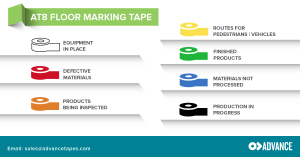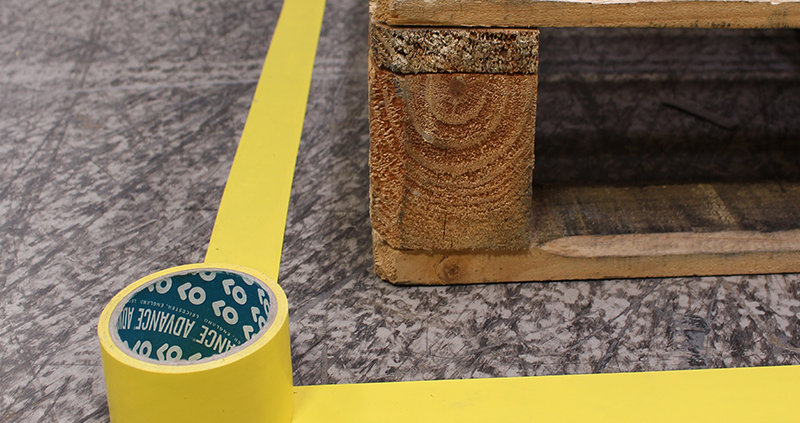How to Implement the 5S Methodology
The 5S system is an exciting trend that has been credited with revolutionising the way many different companies operate. The principle originated in Japan, a country widely regarded as exceptionally efficient and productive. This “lean” framework is very simple at its core, and relatively easy to apply to any working environment.
Although we can trace the origins of the 5S methodology back to just after the Second World War, this tried-and-tested template has only become more popular with time. Businesses around the world have adopted it in search of greater efficiency, including all kinds of manufacturers, engineers and other firms in the industrial sector.
The name “5S” refers to the five key principles. Each one was originally named in Japanese, so the English translations sometimes vary, but typically these are as follows:
• Sort – Keep only what is necessary.
• Set in order – Assign a place for each tool or item.
• Shine – Clean workstations and equipment regularly.
• Standardise – Define the standards to be reached.
• Sustain – Keep it up in the long run.
Why is the 5S system so popular?
Aside from its simplicity, the method offers several key benefits that apply to most types of companies.
• Efficiency – By reducing clutter and streamlining processes, it makes sense that productivity tends to increase when following this methodology. Waste reduction is a particularly beneficial side effect that manufacturers especially tend to enjoy.
• Safety – The 5S method helps to provide employees with a safe work environment and reduces the likelihood of workplace accidents, particularly through the visual delineation of risk areas.
• Use of space – Another common benefit of using the 5S method is that space can be used more effectively, which is a major concern for most industrial firms. Space that isn’t used to store useless items or kept in poor condition can be used for more profitable activities.
• Production quality – For manufacturers in particular, improving standards on the factory floor has a positive impact on the finished product. Defects and accidents become less common when things are well-managed.
• Customer satisfaction – As a result of all this, businesses following 5S often report happier customers, which makes perfect sense. Improving the entire production process, and the working environment for all your employees, tends to show in the final product and therefore keeps customers happy.
What is the best way to implement 5S?
The good news is that 5S is extremely flexible. You should follow all the five steps in order if you want the best results, but that doesn’t require a lot of investment. The main thing it will take is time, until the method becomes second nature to you and the rest of your team.
Before implementing an action plan, it is necessary to define your goals and assemble a team so that you can achieve better results.
1. Sort – The first step is to review every item in your work environment, including equipment, machinery, materials, cables, tools, stationery and so on. Everything that is not essential should be removed. The goal is to keep only what is essential to your productivity.
Prepare your sorting space in advance so that you can assign everything to one of three groups of items: keep, remove and check. The third category is reserved for items you are not sure about. You may want to get advice from colleagues or confirm their usefulness in time; for example, if you have not used this tool after a month it may not be worthwhile to keep it. What you do not need may then be recycled or disposed of.
2. Set in order – After eliminating the unnecessary items, what remains should be carefully organised. Things should be stored in logical places that are easy to access according to their frequency of use. For example, a tool you use daily should be as accessible as possible and close to your workstation.
You can organise your administrative documents in alphabetical order and tag your files to find them faster.
If you work in a maintenance or repair department, your everyday tools can be hung on the wall with their location labelled. Those you use less can be stored in boxes on shelves. It is important to define the location of your tools and materials to ensure that they will be put back in their place at the end of the day.
The same goes for the flow of people and vehicles. It is especially important to clearly mark your pedestrian routes in a warehouse or factory to help reduce the risk of accidents.
3. Shine – Thorough and regular cleaning is the next step, since dirty areas are linked to lower productivity. Clean equipment lasts longer and requires less maintenance, plus it helps create a happier working environment for employees.
4. Standardise – It’s important to introduce structure and guidelines when it comes to maintaining a clean and well-organised workplace. Rules and instructions should be put in place so everyone can follow the same procedures more easily.
These standards must be visible and understandable. Use dashboards, posters or brochures with “before and after” photos to communicate your message easily to all employees. Simple colour coding is usually effective to convey standards, reduce risks and draw attention to the most important information.
5. Sustain – With all of the other steps already in place, this final principle should be easier, but is perhaps the most important of all. The process cannot be a one-off, but instead has to be ongoing to ensure the benefits continue to be felt.
At this point, you generally have to involve everyone who was not involved in the early stages. You need to train your management team and your employees, and ideally create training guides to be distributed at the end of these sessions.
Weekly or monthly meetings are a good way to take stock of the development of the 5S method and track the results. It is important to have well-defined Key Performance Indicators (KPIs).
Organising competitions between different services or departments can help to motivate all your teams to accomplish the objectives. Making surprise visits also helps encourage the application of standards, as long as there is plenty of positive reinforcement. Make sure to identify and praise what is being done well, while addressing any weak points constructively. Finally, update your standards as you go along; the 5S method is flexible and will evolve with time and your needs.
What are the best tools to use?
Although this process primarily only requires time and common sense, getting a few key resources in place (including checklists, maps, training guides etc.) could really help you implement 5S and experience the benefits more quickly. Of course, one of those happens to be something we know a lot about…
Indeed, floor marking is an essential step for the organisation and demarcation of spaces in factories, warehouses or public buildings. Easy and quick to install, the tape can create lanes, indicate the location of pallets or vehicles, and draw attention to high-risk areas.
Available in a wide range of colours, our AT8 Floor Marking Tape adapts perfectly to your colour coding system and increases the visibility of your different areas. For long-lasting performance, our AT8 is resistant to abrasion, water and UV light.
Here are some examples of how to use each of our standard colours for AT8:

We hope you find this guide useful if you’re considering using the 5S method in your workplace! For any questions regarding lane marking or any other kind of tape that might be useful in your organisation process, don’t hesitate to get in touch with us.








Comments are closed.